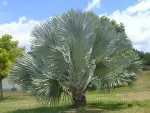This post contains affiliate links. If you buy something from one of our links we may earn a commission. Thanks
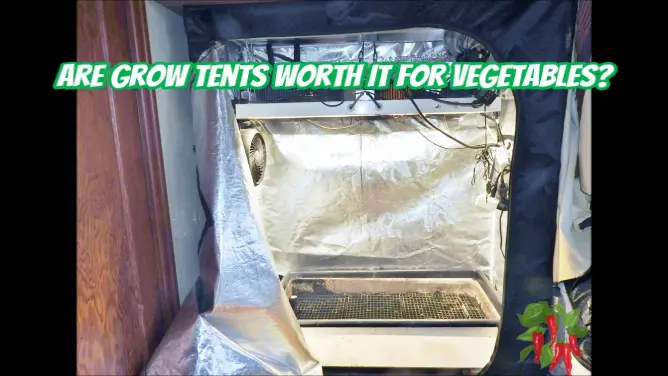
Discover the secret to growing fresh veggies year-round! Are grow tents worth it for vegetables? Find out now in our informative blog post.
Using grow tents for vegetables allows gardeners to cultivate fresh produce year-round by creating controlled indoor environments. They provide the necessary light, temperature, and humidity for plants to thrive, irrespective of outdoor weather conditions.
While they require an initial investment, they offer protection from pests, increased yield, and a compact growing area, making them a valuable tool for both novices and experienced gardeners.
Are you tired of waiting for the perfect outdoor gardening season to grow your favorite vegetables?
Are you looking for a way to cultivate fresh produce all year round? Well, look no further!
Today, we’re exploring an exciting option that’s taking the gardening world by storm: grow tents!
So, are grow tents worth it for vegetables?
In this article, we’ll dive into the benefits and drawbacks of using a grow tent for vegetable cultivation, as well as which veggies thrive in this setup.
We will also give some tips on setting up a grow tent for vegetables.
Whether you’re a seasoned gardener or just starting out, we’re here to help you decide if a grow tent is the right choice for your vegetable-growing needs.
I. Introduction To Using A Grow Tent For Vegetables
Hey there! Have you ever heard of grow tents? These handy devices are a game-changer for anyone who loves to grow their own veggies.
You might be wondering what is a grow tent used for and do I need a grow tent for vegetables. You don’t need a grow tent for vegetables but it sure can help.
With a grow tent, you can create the perfect environment for your plants to thrive, no matter what the weather is like outside.
But the big question is, are grow tents worth it for vegetables? In this article, we’ll explore the pros and cons of using a grow tent for your veggie garden and help you decide if it’s the right choice for you.
So, whether you’re a seasoned gardener or a curious newbie, let’s dive in and discover the world of grow tents!
Let’s start with the basics
A grow tent is essentially a portable indoor garden that allows you to control every aspect of your plant’s environment, including light, temperature, humidity, and ventilation.
They’re usually made of a sturdy frame covered in reflective material, which helps maximize the effectiveness of your grow lights.
With a grow tent, you can create the ideal growing conditions for your vegetables, all in a compact and convenient package.
So, why are we talking about grow tents today?
The purpose of this article is to help you decide whether a grow tent is a good investment for your vegetable garden.
We’ll explore the advantages and disadvantages of using a grow tent for vegetable cultivation, as well as which types of veggies are best suited to this type of environment.
By the end of this article, you’ll have all the information you need to make an informed decision about whether to give grow tents a try.
In A Nutshell
The purpose of this article is this: grow tents can be an excellent tool for growing vegetables, but they’re not the right choice for everyone.
We’ll weigh the pros and cons of using a grow tent, taking into account factors like cost, space, and level of expertise required.
Our goal is to provide you with a balanced and informative overview of this topic so that you can decide for yourself whether a grow tent is worth it for your vegetable garden.
II. Advantages of growing vegetables in a grow tent
Now that we’ve covered the basics, let’s dive into the fun stuff – the advantages of growing vegetables in a grow tent!
There are plenty of reasons why indoor gardening with a grow tent is becoming increasingly popular among vegetable growers.
From greater control over growing conditions to protection from pests and diseases, grow tents offer a range of benefits that can help you grow healthy, thriving plants.
So, let’s take a closer look at some of the biggest advantages of growing vegetables in a grow tent!
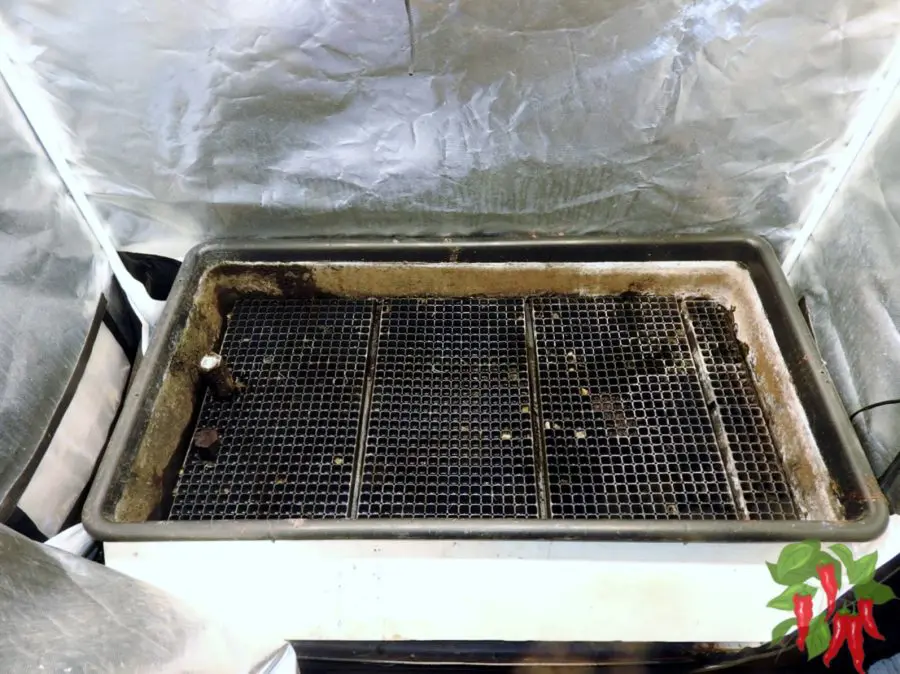
Control Of The Growing Environment
With a grow tent, you have complete control over your plants’ environment. You can adjust the lighting, temperature, and humidity levels to match your plants’ specific needs.
This means you can create the perfect growing conditions for your vegetables, no matter what the weather is like outside or inside the rest of your home!
A grow tent allows you to set up the perfect microclimate for your vegetables even if the rest of your home has less-than-ideal lighting, temperature, or humidity.
Plus, because the environment is so controlled, you can experiment with different growing methods and techniques to see what works best for your plants.
Protection From Pests
One of the biggest advantages of a grow tent is the protection it offers from pests and diseases.
Because your plants are enclosed in a sealed environment, they’re less likely to be attacked by common garden pests like aphids, spider mites, and whiteflies.
It is hard for example to grow radishes or many brassica plants outdoors because of root maggots.
But in a grow tent these pests are absent and I can grow perfect crops.
Additionally, you can prevent the spread of disease by carefully controlling the environment and limiting contact with contaminated soil or other plants.
Saving Space
Growing vegetables in a grow tent is also a great way to save space.
If you don’t have a lot of room to work with, a grow tent can help you maximize your growing area by using vertical space.
You can use a trellis net to create vertical levels for vining crops like cucumbers or melons and create a compact, efficient growing setup for your other plants.
Plus, because you can control the environment so precisely, you don’t need as much space as you would for an outdoor garden.
Increased Yield
Another benefit of using a grow tent for vegetable cultivation is the potential for increased yield.
Because you have so much control over the growing conditions, you can create an optimal environment that encourages your plants to produce more fruit or vegetables.
You can also extend your growing season by using artificial lighting, which can give your plants the extra boost they need to keep producing throughout the year.
Zone Denial
In the Pacific Northwest where I live the weather is too cool for heat-loving crops like melons or sweet potatoes.
But they grow just fine in a grow tent.
So not only do grow tents extend the season but they provide zone denial by providing a climate not available outdoors at any time.
Versatility
Finally, grow tents are incredibly versatile. You can use them to grow a wide range of vegetables, from leafy greens and herbs to tomatoes, peppers, and root vegetables.
Whether you’re a beginner or an experienced gardener, a grow tent can help you experiment with new varieties and techniques.
Plus, because the environment is so controlled, you can grow vegetables that might not do as well in your outdoor garden, like tropical or exotic plants.
III. Disadvantages of growing vegetables in a grow tent
While there are plenty of advantages to using a grow tent for vegetable cultivation, it’s important to consider the potential downsides as well.
In this section, we’ll explore some of the main disadvantages of growing vegetables in a grow tent.
From the initial investment to the ongoing maintenance requirements, there are a few things to keep in mind before you decide whether a grow tent is right for your vegetable garden.
So, let’s take a closer look at some of the challenges you may encounter when growing vegetables in a grow tent.
Cost
One of the biggest drawbacks of using a grow tent for vegetable cultivation is the cost.
While grow tents can help you save money on things like water and fertilizer, the initial investment in equipment can be quite high.
You’ll need to purchase a tent, grow lights, ventilation equipment, and other accessories, which can add up quickly.
However, if you’re serious about indoor gardening and plan to use your grow tent for multiple seasons, the investment can be worth it.
Electricity
Another potential downside of using a grow tent is the increased electricity usage.
Grow lights and other equipment can consume a lot of energy, which can result in higher utility bills.
However, there are ways to minimize your electricity usage, such as using energy-efficient LED grow lights and setting up a timer to control when your lights are on.
Limited Space
Grow tents also have limited space compared to outdoor gardens.
While you can maximize your growing area by stacking shelves and using vertical space, there’s still a limit to how many plants you can grow in a single tent.
If you’re planning to grow a large quantity of vegetables, you may need to invest in multiple tents or look for other indoor gardening solutions.
Maintenance
Using a grow tent for vegetable cultivation also requires ongoing maintenance.
You’ll need to monitor the environment regularly, adjust the lighting and ventilation as needed, and keep an eye out for pests and diseases.
Additionally, you’ll need to clean your equipment regularly to prevent mold and bacteria growth.
While these tasks aren’t particularly difficult, they do require a certain level of commitment and attention to detail.
Skill
Finally, growing vegetables in a grow tent requires knowledge and skill.
You’ll need to understand the specific needs of your plants and be able to adjust the environment accordingly.
Additionally, you’ll need to be familiar with common gardening techniques like pruning, fertilizing, and watering.
While it’s possible to learn these skills through trial and error, it’s important to be prepared for a bit of a learning curve if you’re new to indoor gardening.
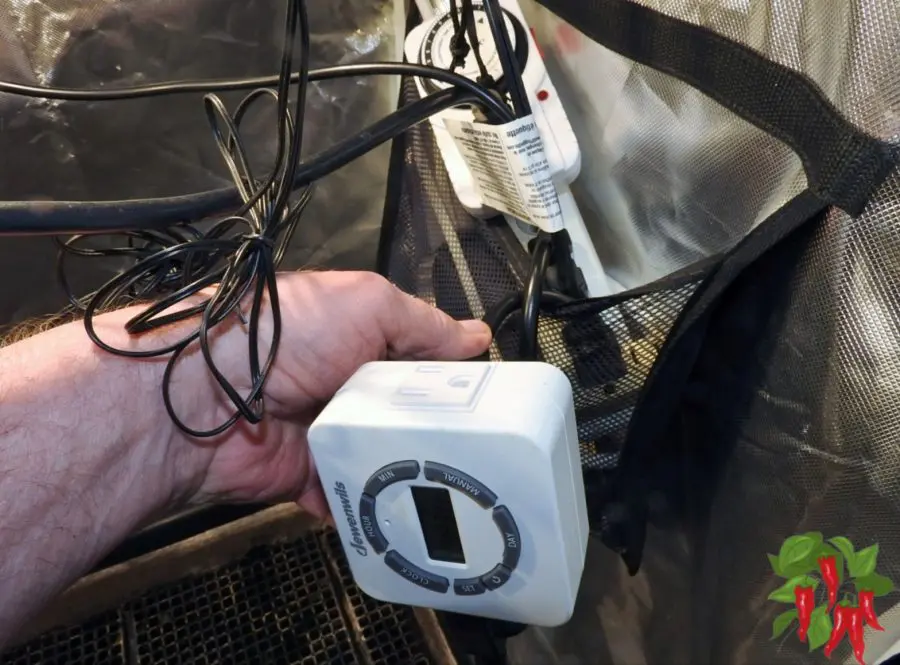
IV. Which vegetables grow best in a grow tent?
If you’re considering setting up a grow tent for vegetable cultivation, you might be wondering which types of vegetables will thrive in this environment.
In this section, we’ll explore some of the best vegetables to grow in a grow tent.
From leafy greens to root vegetables, there are plenty of options that can do well in a controlled indoor environment.
So, whether you’re an experienced gardener or just starting out, let’s take a look at some of the top vegetables to consider growing in your grow tent.
Leafy Greens
Leafy greens like lettuce, spinach, and kale are great options for growing in a grow tent.
They don’t require a lot of space and can be harvested multiple times throughout the growing season.
Plus, they’re packed with nutrients and can be used in a variety of dishes.
Herbs
Herbs like basil, parsley, and cilantro are also ideal for grow tent cultivation.
They don’t require a lot of light or space and can add a lot of flavor to your cooking.
Plus, many herbs are known for their medicinal properties and can be used in natural remedies and teas.
Tomatoes
Tomatoes can be a bit trickier to grow in a grow tent, but they’re definitely worth the effort.
They require a lot of light and space, so you’ll need to make sure you have enough room in your tent and invest in high-quality grow lights.
If you grow bush tomato varieties that are determinate they will stay shorter and smaller than the taller indeterminate varieties.
With proper care and attention, you can enjoy delicious, vine-ripened tomatoes year-round.
Peppers
Peppers are another great option for grow tent cultivation.
They don’t require as much light as tomatoes, but they do need warm temperatures to thrive.
With the right setup and care, you can grow a variety of peppers in your grow tent, from sweet bell peppers to spicy chili peppers.
Root Vegetables
Root vegetables like carrots, beets, and radishes can also be grown in a grow tent.
They may require deeper but otherwise, they don’t use more space than other vegetables.
However, with the right setup, you can enjoy fresh, homegrown root vegetables year-round.
V. How to set up a grow tent for vegetable cultivation
So, you’ve decided to try your hand at vegetable cultivation in a grow tent. Congratulations!
This can be a fun and rewarding hobby, but it does require some setup and preparation.
In this section, we’ll walk you through the steps you’ll need to take to set up your grow tent for vegetable cultivation.
From choosing the right location to selecting the right equipment, we’ll cover everything you need to know to get started.
So, grab your gardening gloves, and let’s dive in!
Inside My Grow Tent – Setting Up A Grow Tent For Vegetables
Here is a video I made that shows my grow tent and what you need. It also gives a walk-through for setting up an automated flood and drain system.
 This is the grow tent I am using in my video. You can check it out on Amazon here.
This is the grow tent I am using in my video. You can check it out on Amazon here.
It is 48 x 24 x 60 inches and works well for me. There are many other sizes available.
Forget About A DIY Grow Tent
Some of you may be thinking about building a grow tent. My advice is don’t bother.
Grow tents are very affordable and a DIY grow tent will cost as much to build as a manufactured one. It would be very difficult to build one anywhere near as good.
The grow tent itself is the cheapest part of setting up a grow tent for vegetables. Your grow light will be the most expensive thing followed by an exhaust fan.
Grow Tent Size
Choosing the right size and type of grow tent is the first step to setting up your vegetable cultivation space.
You’ll need to consider how many plants you want to grow and how much space they’ll need to thrive.
There are many different sizes and types of grow tents available, so it’s important to choose one that meets your specific needs.
Lighting Requirements – Grow Tents And Lights
Lighting requirements are crucial for successful vegetable cultivation in a grow tent.
Most vegetable plants require a lot of light to grow and thrive, so you’ll need to invest in high-quality grow lights.
You’ll also need to consider the type of light, the wattage, and the duration of light exposure.
Choose LED Grow Lights
LED grow lights will be the most efficient. They produce light that is close to natural sunlight.
They produce more light per watt of electricity than other lights. They also produce less heat which is important in a grow tent.
Ventilation
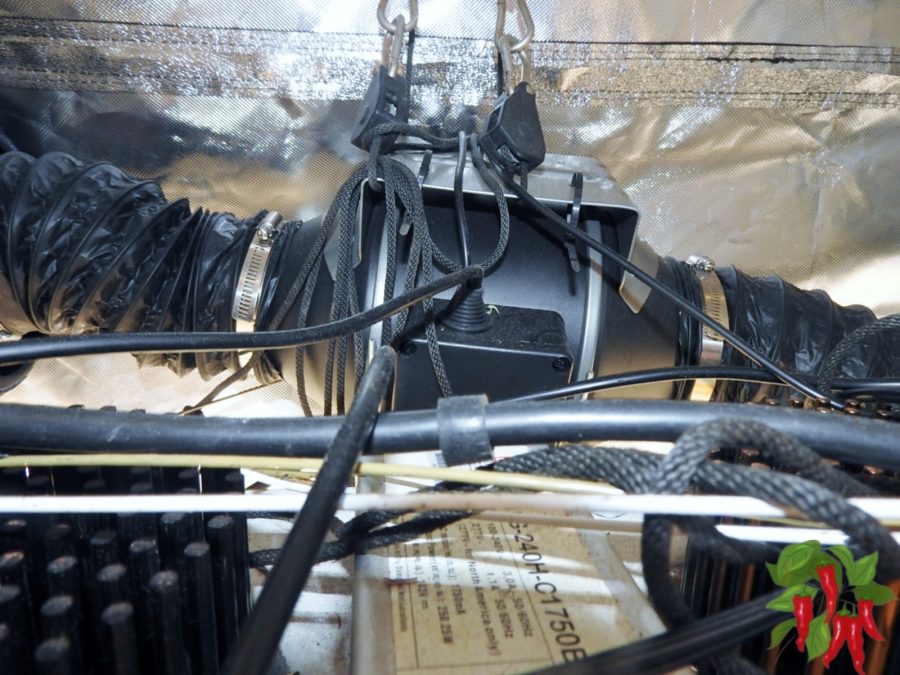
Ventilation is another important factor to consider when setting up your grow tent.
Plants need fresh air to thrive, so you’ll need to ensure your tent has adequate ventilation.
This can include intake and exhaust fans, as well as carbon filters to control odor if you decide to grow cannabis instead of vegetables.
Temperature And Humidity Control
Temperature and humidity control are also important for successful vegetable cultivation in a grow tent.
You’ll need to monitor the temperature and humidity levels in your tent to ensure your plants are growing in an optimal environment.
This can include using a heater, air conditioner, or dehumidifier, depending on your specific needs.
Generally, your exhaust fan will help control humidity and temperature. If you live in a dry climate you may need to add a humidifier.
Nutrient And Watering Needs
Nutrient and watering needs will also need to be considered when setting up your grow tent.
You’ll need to select the right soil mix and nutrients for your plants, as well as establish a regular watering schedule.
Watering and fertilizing are easy to automate in a grow tent.
It’s important to monitor your plants’ growth and adjust your care routine as needed to ensure they’re getting the nutrients and water they need to thrive.
Grow Tent FAQs
Grow tents have emerged as a viable solution for those looking to indulge in gardening regardless of the seasons.
They offer a controlled environment for a variety of vegetables to grow in. However, like any other gardening method, they come with their own set of considerations.
Below are some frequently asked questions regarding the use of grow tents for vegetable cultivation:
Q. What is the main purpose of using a grow tent for vegetables?
A. The main purpose of using a grow tent for vegetables is to provide a controlled environment where gardeners can manage light, temperature, and humidity levels to promote optimal plant growth year-round.
Q. How do I choose the right size of a grow tent for my needs?
A. Choosing the right size of a grow tent depends on the number of plants you plan to grow, their spacing requirements, and the available space in your home.
It’s advisable to measure the space, consider the mature size of the plants, and ensure there’s enough room for them to grow healthily.
Q. What types of vegetables are best suited for growing in a grow tent?
A. Leafy greens like lettuce, spinach, and kale, as well as herbs, tomatoes, peppers, and some root vegetables like carrots and radishes, are well-suited for grow tent cultivation.
They have varying light and space requirements, so it’s essential to choose vegetables that match the capabilities of your grow tent setup.
Q. Is it expensive to set up and maintain a grow tent for vegetable cultivation?
A. Setting up a grow tent can be initially costly due to the purchase of the tent, grow lights, and ventilation equipment.
However, maintenance costs can be relatively low if energy-efficient lights are used and the setup is properly managed.
Over time, growing your own produce can also offset some of the costs by reducing the amount you spend on store-bought vegetables.
VI. Conclusion
Well, we’ve covered a lot of ground in this article about grow tents and vegetable cultivation.
Hopefully, you now have a better understanding of the advantages and disadvantages of using grow tents for vegetable growing, as well as the best vegetables to grow in them and how to set up your own tent.
Ultimately, the decision of whether or not to use a grow tent for your vegetable cultivation comes down to your personal preferences and circumstances.
However, if you’re looking for a controlled environment with protection from pests and diseases, increased yield potential, and space efficiency, a grow tent might be the perfect solution for you.
Whatever you decide, happy growing!
Grow Tent Pros And Cons
Summary of advantages and disadvantages:
In summary, using a grow tent for vegetable cultivation can offer a controlled environment, protection from pests and diseases, increased yield potential, and space efficiency.
However, it also comes with the disadvantages of cost, electricity usage, limited space, maintenance requirements, and the need for knowledge and skill.
Are Grow Tents Worth It For Vegetables? Recommendations:
Based on the advantages and disadvantages discussed in this article, we recommend that you carefully consider your needs and circumstances before deciding whether to invest in a grow tent for vegetable cultivation.
If you have limited outdoor space or are looking for a controlled environment with protection from pests and diseases, a grow tent may be a good option for you.
However, if you have plenty of outdoor space or are on a tight budget, you may want to consider other options.
Final Thoughts On Using Grow Tents For Vegetables
Growing vegetables in a grow tent can be a fun and rewarding hobby, but it requires some investment of time, money, and effort.
With the right setup and care, you can enjoy a bountiful harvest of fresh, homegrown produce right in your own home.
We hope this article has been helpful in guiding you through the process of deciding whether a grow tent is right for you, and wish you the best of luck in your vegetable cultivation journey!
Learn more: Using A Grow Tent For Vegetables [Ultimate Quick-start Guide]




